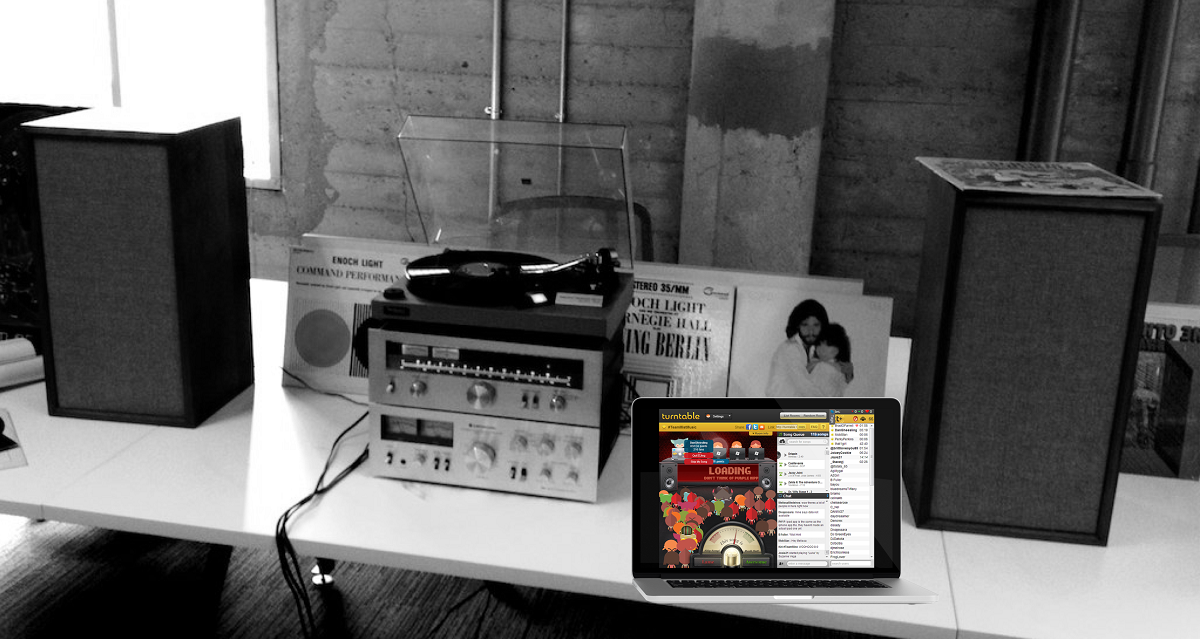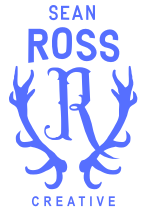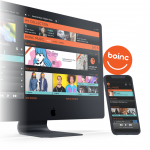Cricket Mobile and Muve Music
Moving the needle on a truly innovative digital music service
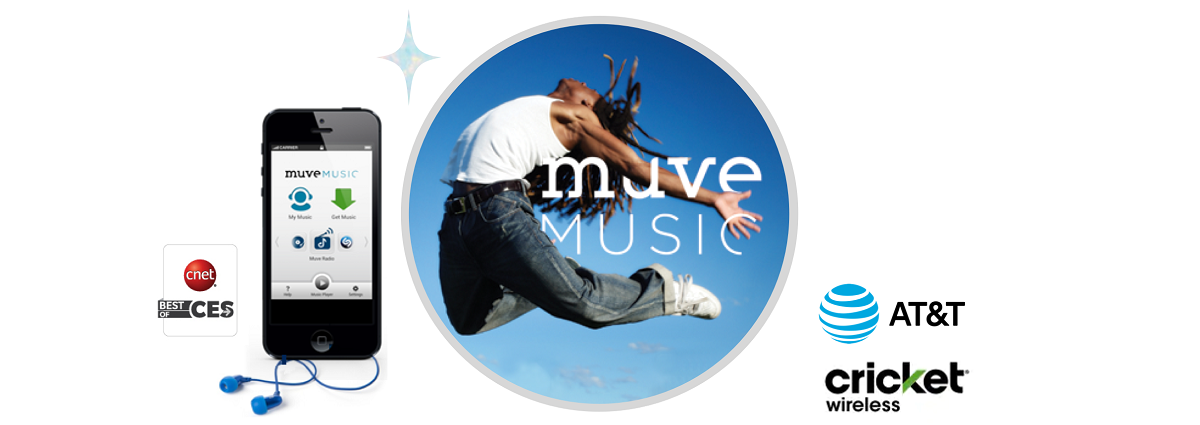
Android & iOS redesign of +2 million user Muve Music app.
From the ashes of failed music startup Beyond Oblivion there came an even more challenging and unique opportunity, by way of an established player in the mobile industry, Leap Wireless (Cricket Mobile). The core team that Beyond had assembled were experts in digital music, having worked for some of the biggest players (Apple, Rhapsody), and due to the implosion of Boinc just before the Christmas holiday, our team just so happened to be free at exactly the moment a similar product—Muve Music—was in the throes of a serious crisis, and desperately needing a plan B.
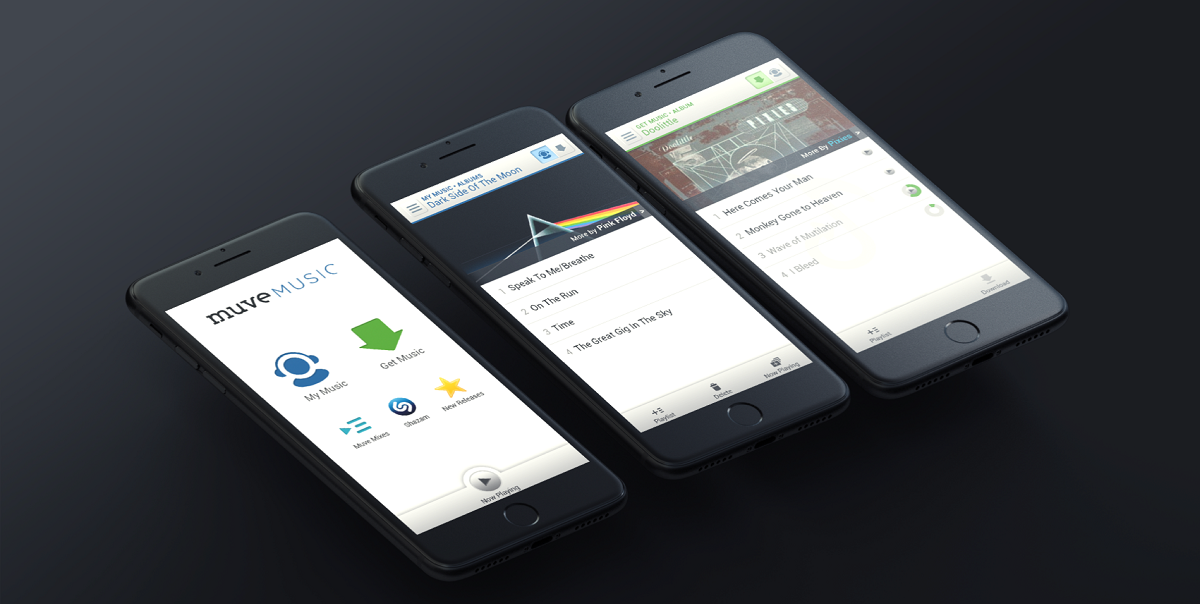
Muve Music 4.0
Leap Wireless developed the Muve Music subscription service for its Cricket Wireless pay-as-you-go mobile carrier. Packaged free of charge with mobile plans, Muve Music was one of the — if not the most — popular music subscription service in the country. The most recent subscriber number was 1.6 million.
In 2012-2013 I was the creative UX director for One Step Beyond Consulting, which was set up to work exclusively for Muve Music, a subsidiary of Cricket Mobile. Our team prototyped and tested new features, brand directions, and radically redefined the UX and visual design of the flagship Android product experience. Cricket (and Muve Music) was purchased by AT&T, which sold the service to Deezer in 2015.
Muve Music had quite an interesting story and background. What began as an experiment incubated within Cricket in order to attempt to move the needle on a few important business metrics, in a short period of time Muve ended up becoming hugely relevant for the company, but with an immediate and unforeseen cost. Because of the speculative nature of such ventures, Muve was never architected to scale properly. Its development had been outsourced to a third party firm, and in order to go to market quickly, they cut corners. As the service became hugely popular, it crippled Cricket’s network infrastructure.
Our team quickly re-assembled under the banner of One Step Beyond, in order to save Muve Music.
While the engineering team rebuilt the infrastructure, the design team worked on a completely new interface for the core app, as well as a new radio feature.
The existing app was functional and popular, but the UI was pretty dated—the original design still had remnants from the flip phone era.

Muve Music 3.0 App Screens, Before the Redesign
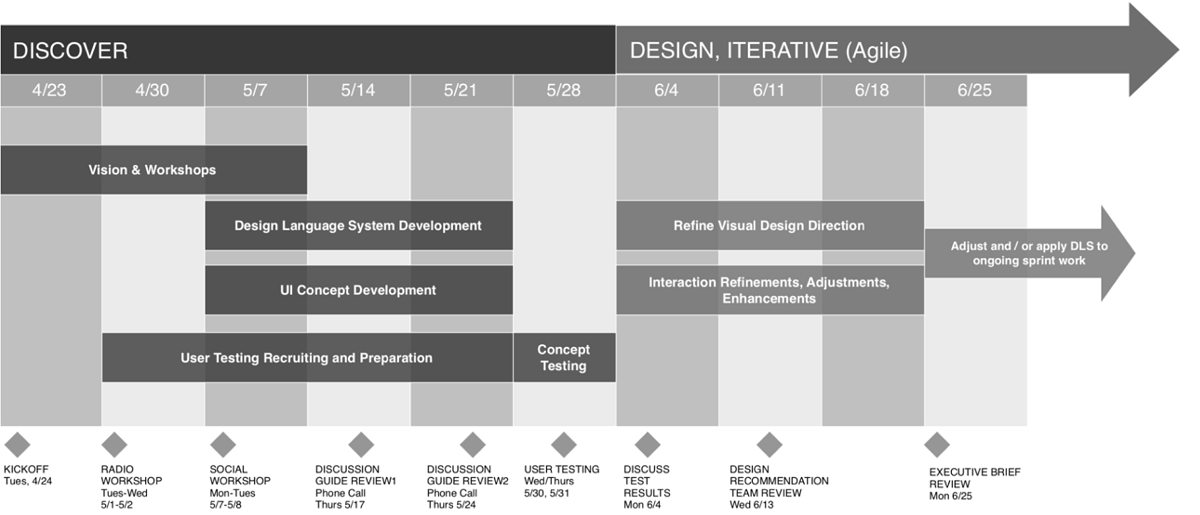
Innovation Team Schedule
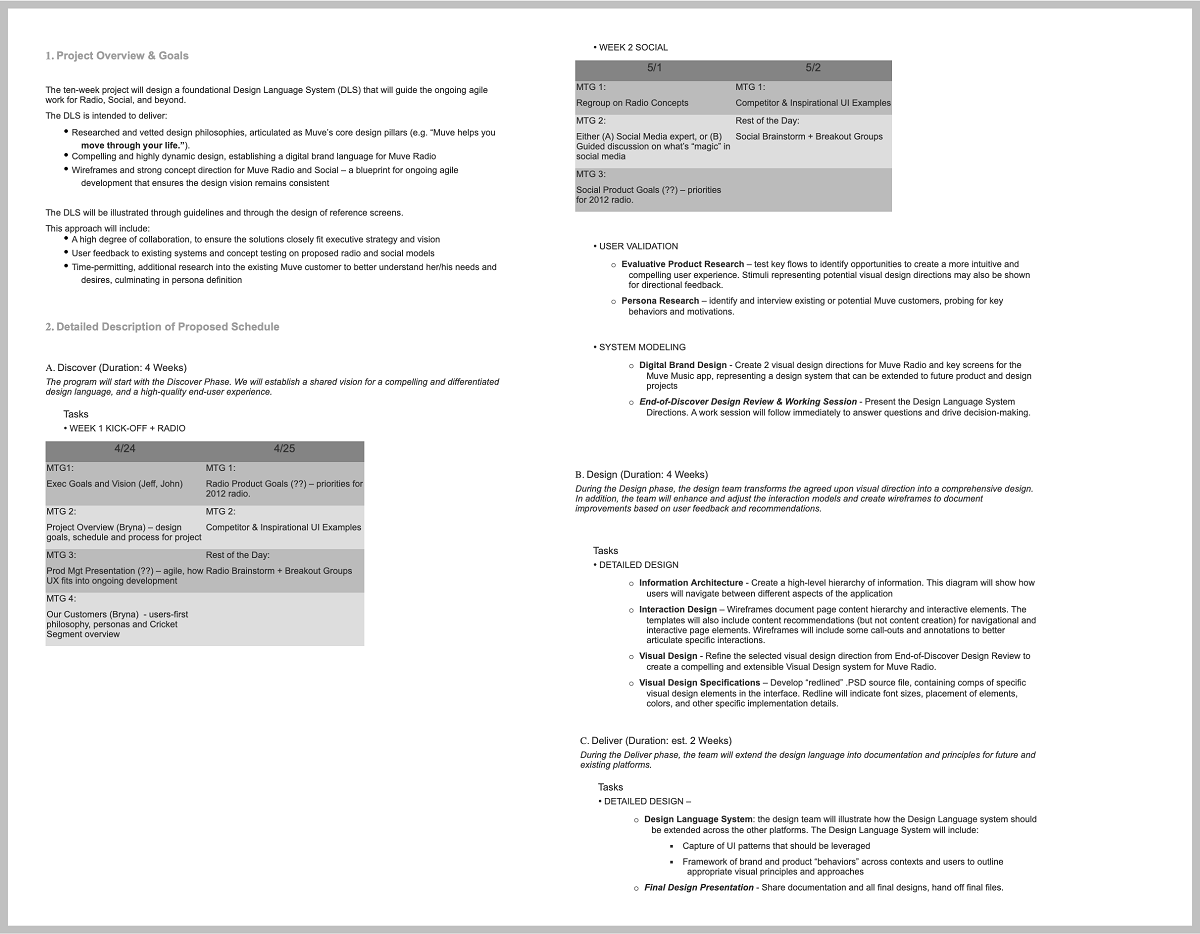
Moving the Needle on a Truly Innovative Music Service
In 2012 Cricket’s Muve Music service was a new business model – embed the cost of an unlimited download service in your monthly phone bill. The service had 500K subscribers when the Muve team enlisted the One Step Beyond group to help grow and evolve Muve to become a free-standing service.
The OSB team was tasked with understanding the opportunities around radio and social. Working together with highly-engaged executives we identified key areas to innovate and moved quickly, mapping out a strategy that resulted in Muve’s acquisition by AT&T.

Innovation Team Concepts
Discovery Phase
My team met for several off-sites to workshop ideas, to engage leadership with the design process. This helped refine the key goals of the product and established an easy rapport with all stakeholders.
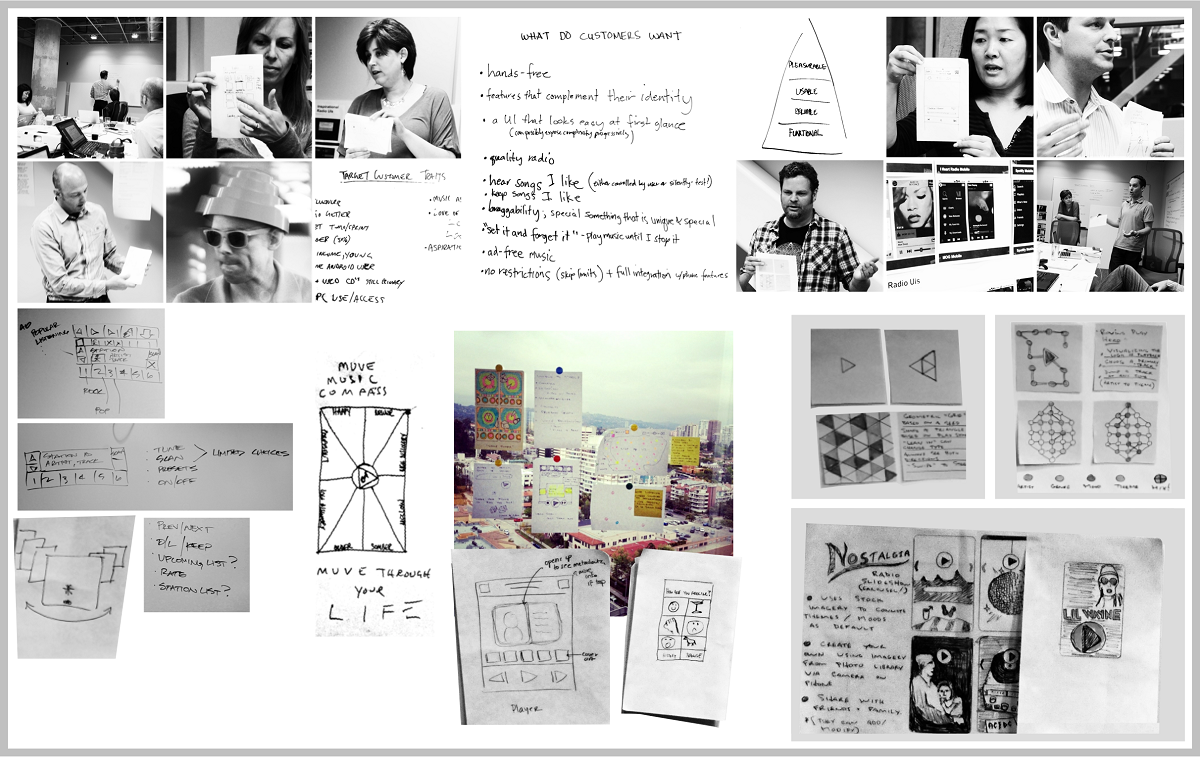
Innovation Team Concepts

Innovation Team Concepts, Further Distilled into Categories
Primary Research
My team interviewed existing Cricket customers (Muve and non Muve subscribers) to vet our ideas. We talked about radio and social music as well as used card sorting to rank feature importance.

Interviews & Card Sorting
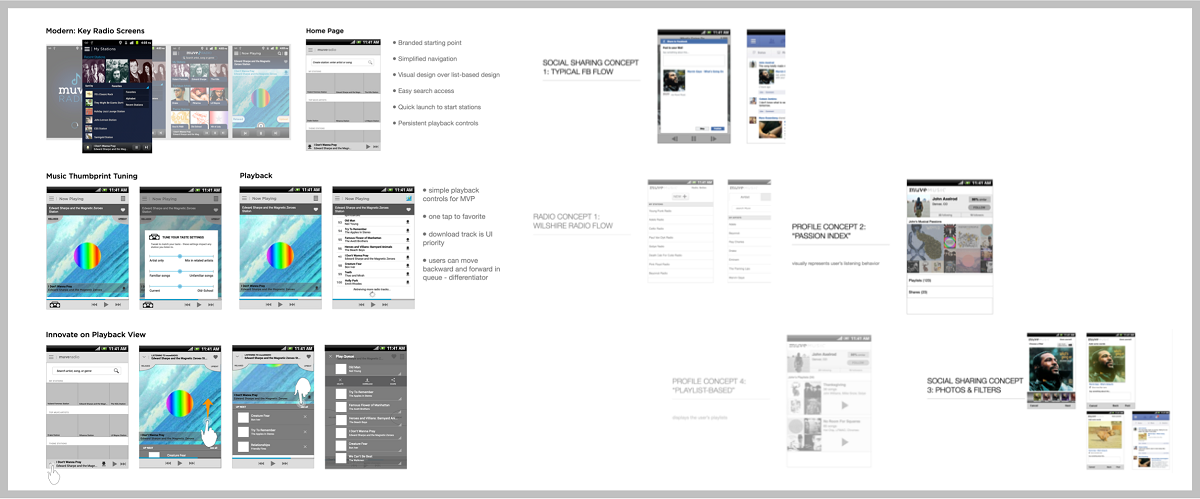
Concept Testing

Visual Design and Feature Rankings for Muve Radio
I presented the results of the research to the team. After meeting with the executive team, the product goals were codified, and we had an agreed-upon framework with all stakeholders to deliver on.
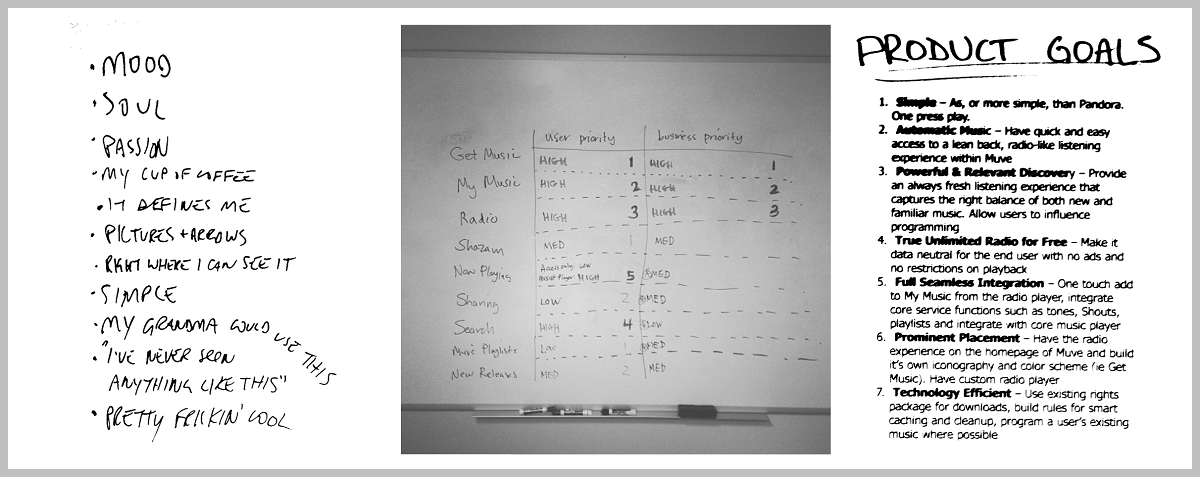
Core Product Concepts from User Feedback, Feature Rankings, and Product Goals
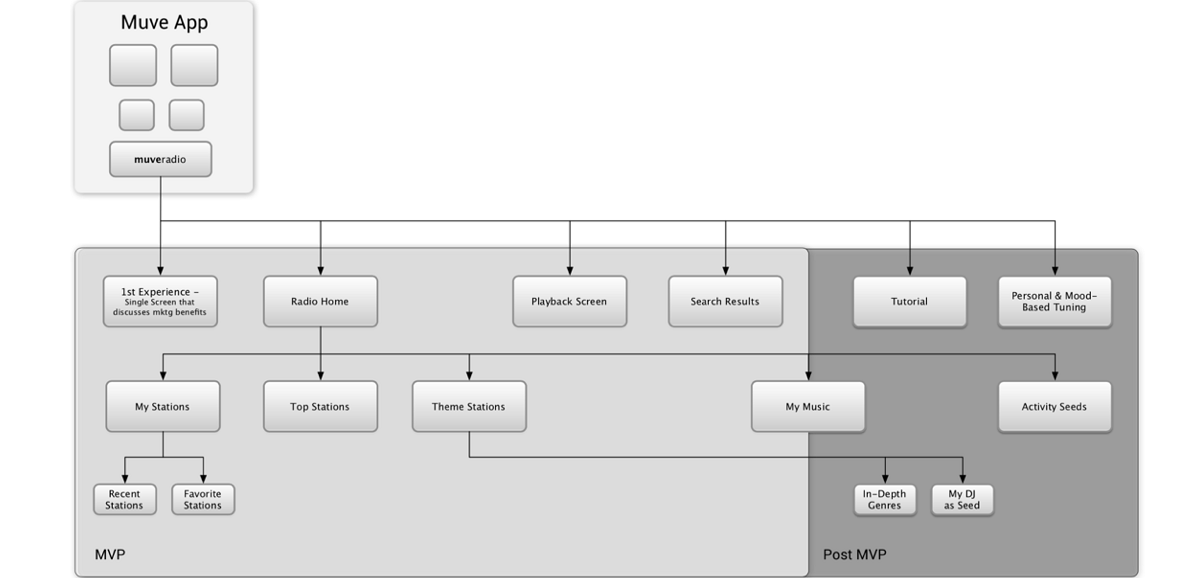
Architecture of Proposed Design Strategy
Conclusion
Muve grew to over 1,000,000+ subscribers by 2013 and was then spun off as its own brand. The service was acquired by AT&T in 2014.
Muve 4.0 for Android and iOS
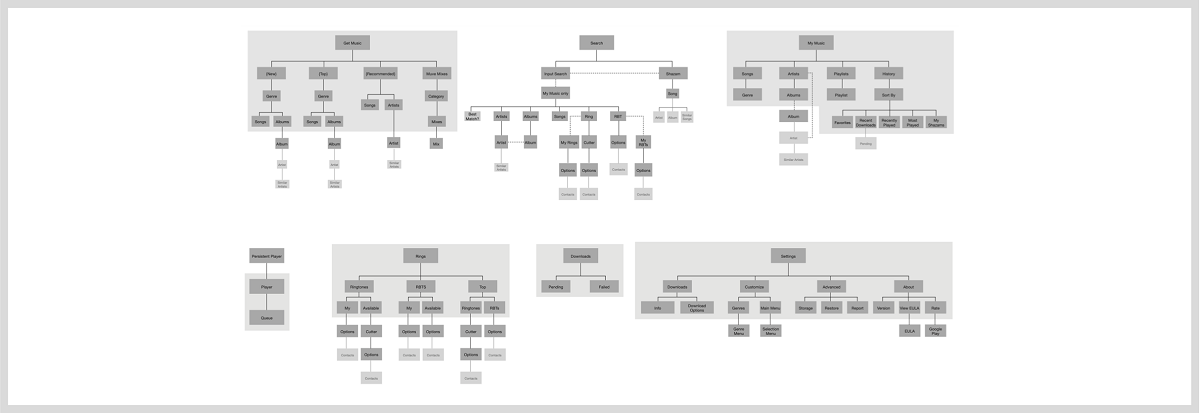
Application Map for Muve Music 4.0

Muve Music 4.0: Mood Launch Screens
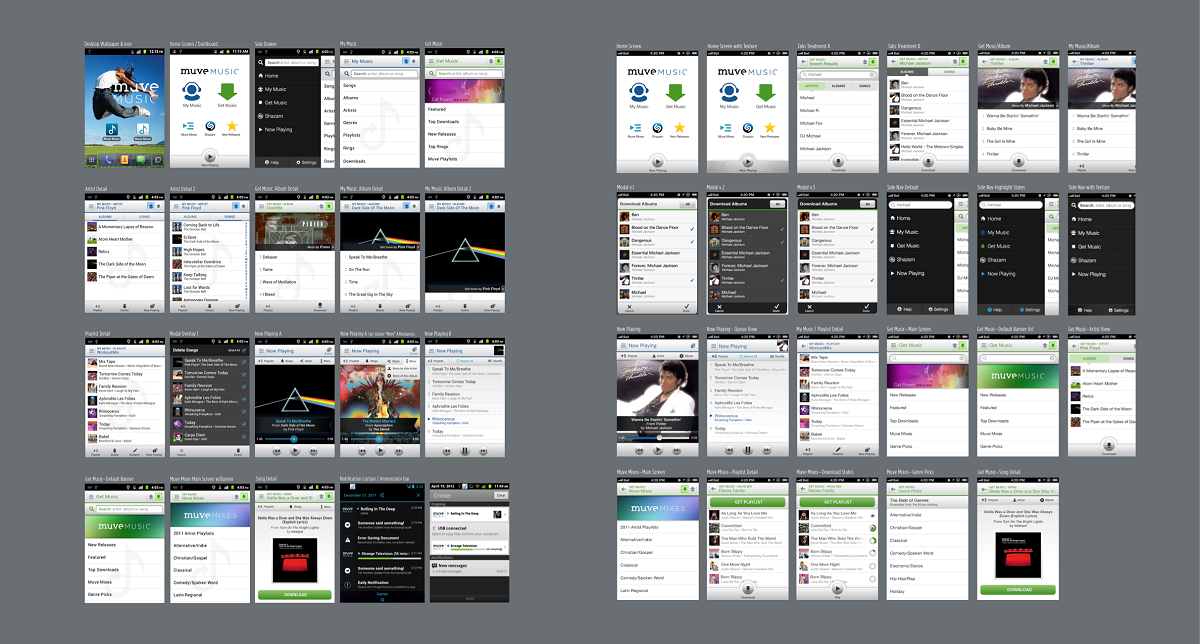
Muve Music 4.0: Android & iOS Beta Screens
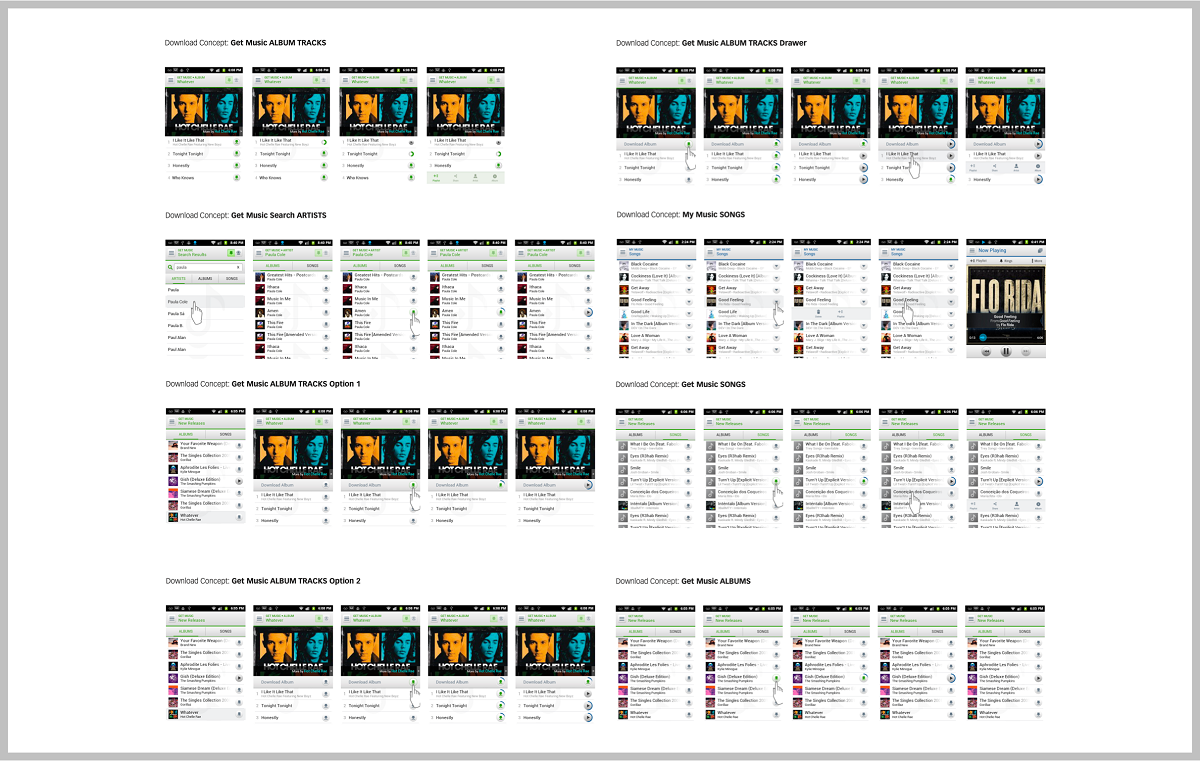
Muve Music 4.0: iOS Interaction Concepts—Highlights
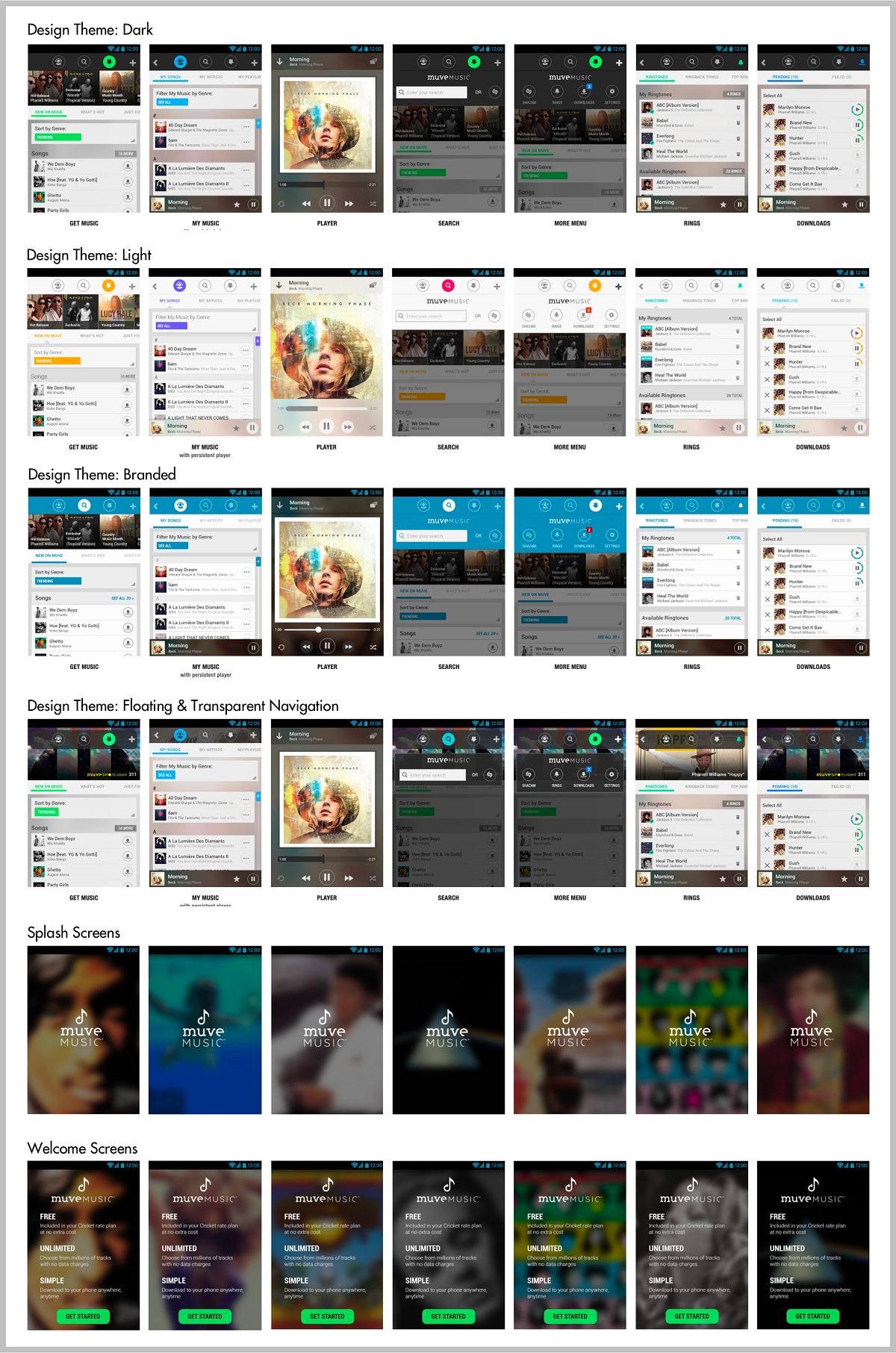
Muve Music 4.0: Android 5.0 Themed Highlights
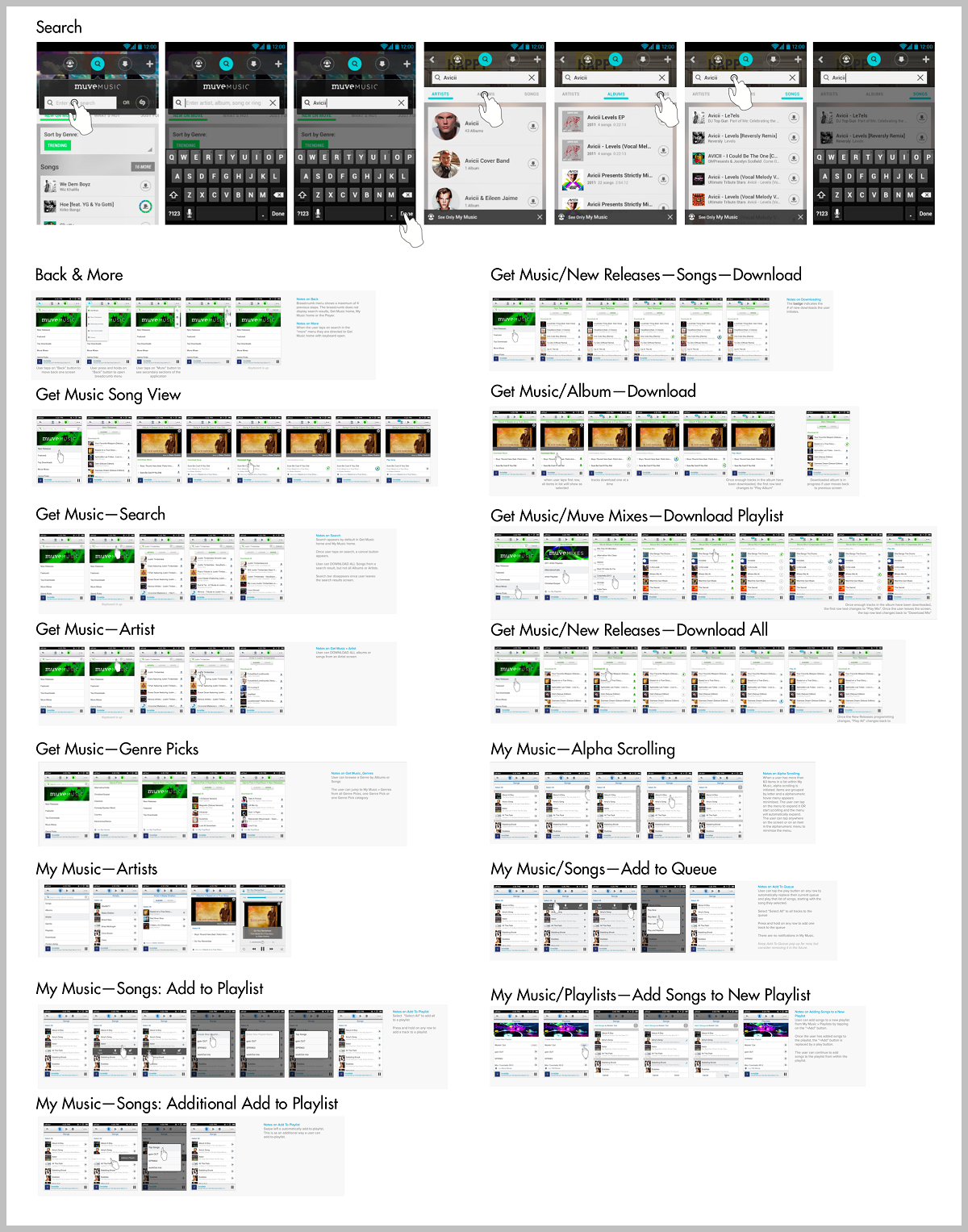
Muve Music 4.0: iOS Highlights
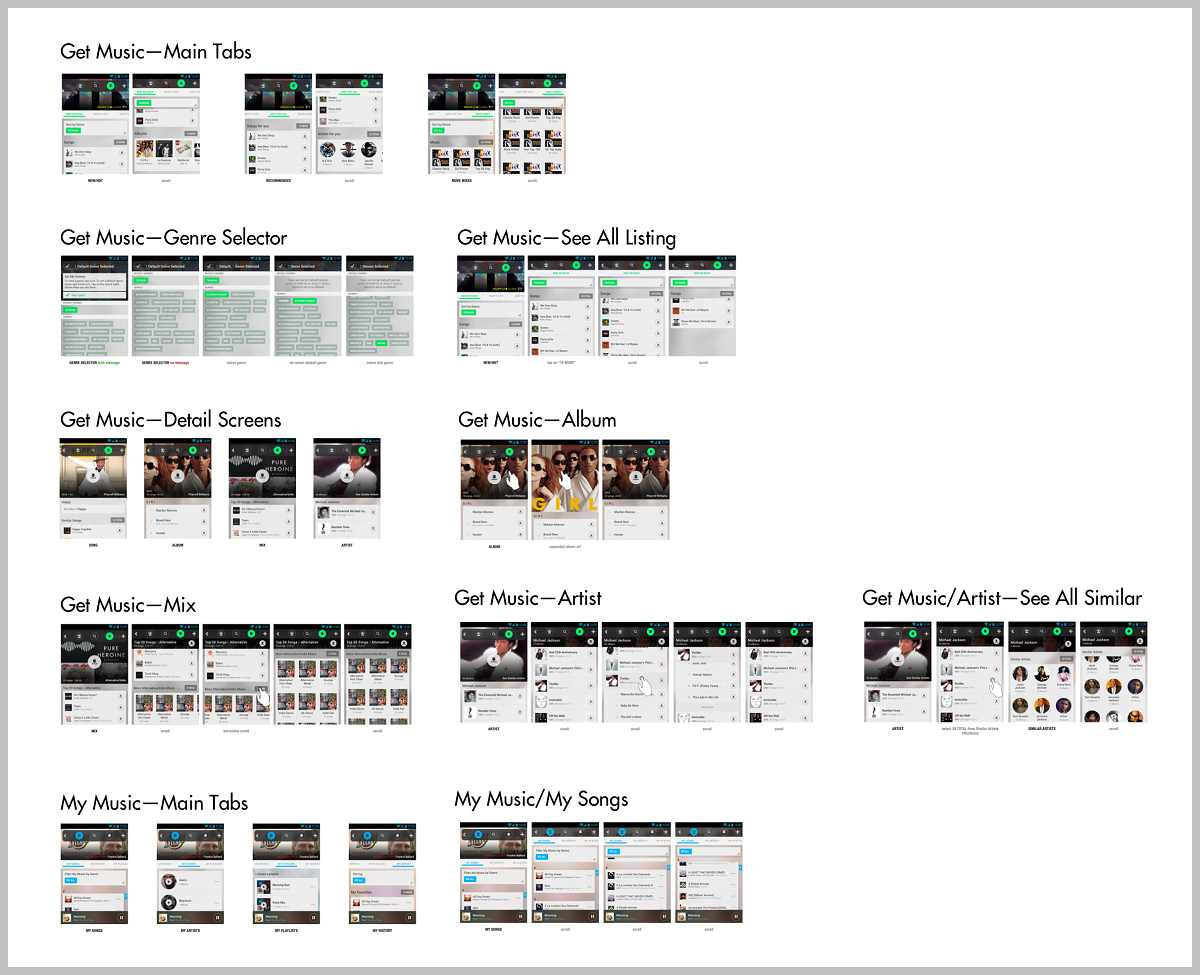
Muve Music 4.0: Android 5.0 Highlights
Company Culture
I bought this vintage stereo for 50 bucks off Craigslist, outfitted it with Bluetooth, and set it up in our San Francisco Brannan St. office digs. Once we connected our entire workplace to daily live sessions inside (sadly now defunct) Turntable.FM, the mad music trivia games began—it ended up increasing office morale by approximately 8 million percent. And a great deal of work still got done 🙂
